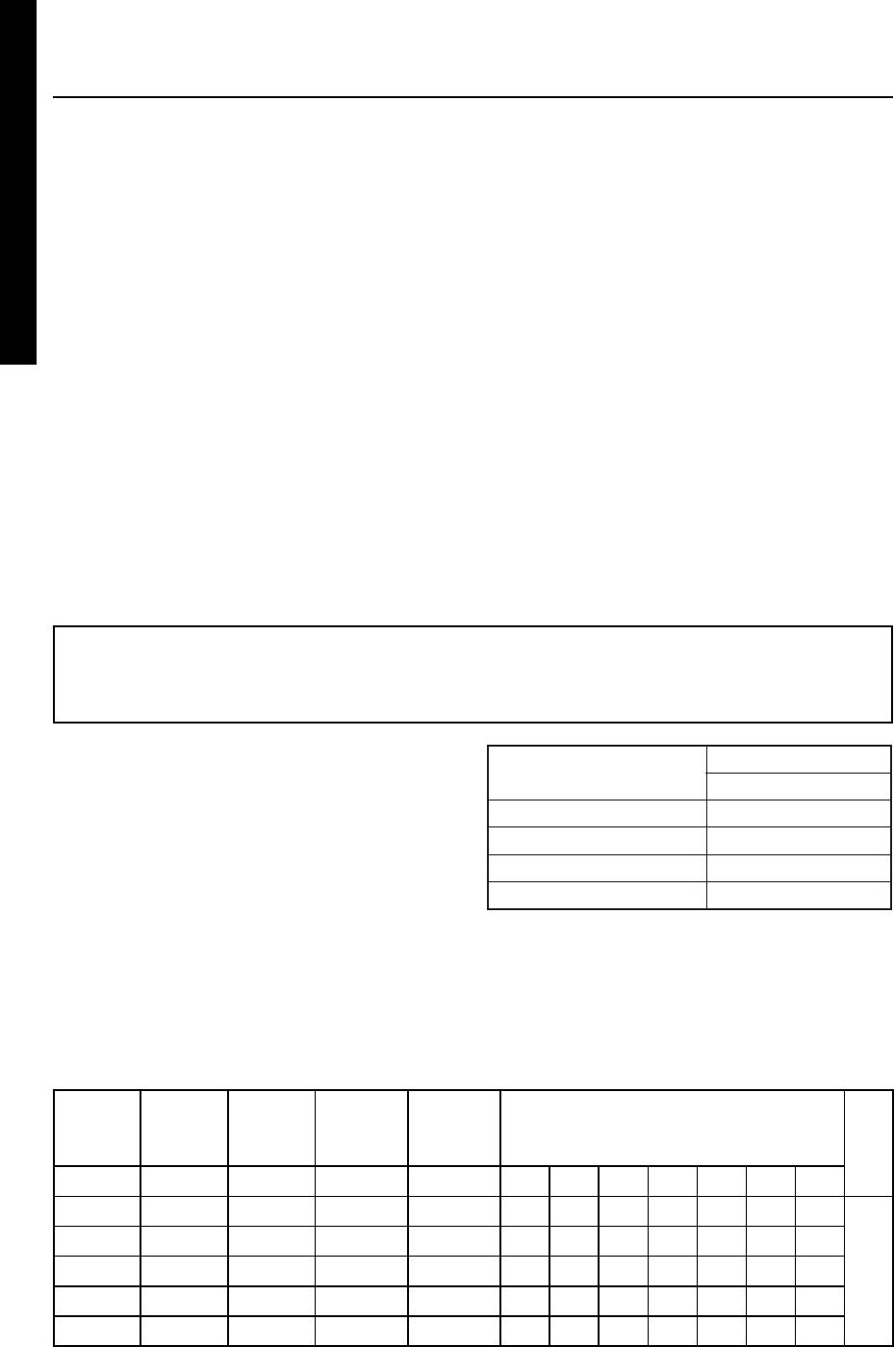
10
ENGLISHFRANÇAISEESPAÑOL
Electrical loads such as incandescent lamps and hot plates require the same wattage to start as is
needed to maintain use.
Loads such as fluorescent lamps require 1.2
to 2 times the indicated wattage during start-up.
Loads for mercury lamps require 2 to 3 times the indicated wattage during start-up.
Electrical motors require a large starting current. Power requirements depend on the type of motor and
its use. Once enough "surge" is attained to start the motor, the appliance will require only 50% to 30%
of the wattage to continue running.
Most electrical tools require 1.2 to 3 times their wattage for running under load during use. For example,
a 5000 watt generator can power a 1800 to 4000 watt electrical tool.
Loads such as submersible pumps and air compressors require a very large force to start. They need 3
to 5 times the normal running wattage in order to start.
For example, a 5000 watt generator would only be able to drive a 1000 to 1700 watt pump.
Some appliances need a "surge" of energy when starting.
This means that the amount of electrical power
needed to start the appliance may exceed the amount needed to
maintain its use.
Electrical appliances and tools normally come with a label indicating voltage, cycles / Hz, amperage (amps)
and electrical power needed to run the appliance or tool.
Check with your nearest dealer or service center with questions regarding power surge of certain appliances
or power tools.
6. WATTAGE INFORMATION
To determine the total wattage required to run a
particular electrical appliance or tool, multiply the
voltage figure of the appliance/tool by the amperage
(amps) figure of same. The voltage and amperage
(amps) information can be found on a name plate
which is normally attached to electrical appliances
and tools.
NOTE
The following wattage chart is general guide only. Refer to your specific appliance for
correct wattage.
Applicable Wattage (W)
60 Hz
approx. 1350
approx. 700
approx. 400
approx. 300
Applications
Incandescent lamp, Heater
Fluorescent lamp, Electric tool
Mercury lamp
Pump, Compressor
VOLTAGE DROP IN ELECTRIC EXTENSION CORDS
When a long electric extension cord is used to connect an appliance or tool to the generator, a certain amount of
voltage drop or loss occurs in the extension cord which reduces the effective voltage available for the appliance or tool.
The chart below has been prepared to illustrate the approximate voltage loss when an extension
cord of 300 feet
(approx. 100 meters) is used to connect an appliance or tool to the generator.
Nominal
cross
section
A.W.G.
Allowable
current
No.of strands
/ strands dia.
Resistance
Current Amp.
No./mm
/100m
mm
2
No. A 1A 3A 5A 8A 10A 12A 15A
0.75 18 7 30/0.18 2.477 2.5V 8V
12.5V
Voltage drop
1.27 16 12 50/0.16 1.486 1.5V 5V 7.5V 12V 15V 18V
2.0 14 17 37/0.26 0.952 1V 3V 5V 8V 10V 12V 15V
3.5 12 to 10 23 45/0.32 0.517 1.5V 2.5V 4V 5V 6.5V 7.5V
5.5 10 to 8 35 70/0.32 0.332 1V 2V 2.5V 3.5V 4V 5V


















